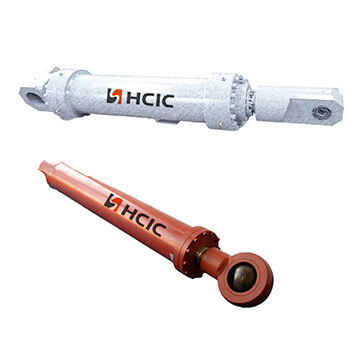Heavy-duty machinery and equipment tend to rely on telescopic hydraulic cylinders. There are critical power transmission components that operate to ensure maximum efficiency in industries as diverse and demanding as construction, waste management, mining, forestry. These are distinctive cylinders as they have the ability to both protrude and retract out, meaning that these products could be efficiently used for various applications. During this extensive study, we shall discuss telescopic hydraulic cylinder working functions and features along with some maintenance hacks to provide a complete overview of how important they are.
Telescopic Hydraulic Cylinders Guide
Telescopic hydraulic cylinders are complex mechanical components made up of multiple stages, one sliding inside the other. This enables the cylinder to retract into a shorter length when required. Putting smaller diameter stages within larger diameters ones was a way to put strength and hardiness on top. Using oil under pressure with double-acting hydraulic systems, these cylinders are able to both retract and extend. Hydraulic fluid creates the necessary force to move a piston inside of a cylinder into its intended position.
Use of Telescopic Hydraulic Cylinders for Heavy-Machinery
Today, Telescopic hydraulic cylinders are widely used in heavy duty machinery and equipments in various industries. Perfect and accurate forces to steer, lift, load or tip. The telescopic cylinder is a connected hydraulic system that propels the design by pressurizing its hydraulic oil, which makes it invaluable in confined spaces.
Telescopic cylinders are used in construction applications as part of equipment such digging, demolition and drilling. They are also crucial in waste management and recycling operations, working inside garbage compactors and recycling trucks. Besides, mining equipment such as a grabber also greatly depend on the telescopic cylinder for transporting massive weight in one go. Telescopic cylinders find employment in the forestry industry as well with skidders and forwarders while material handling machines like telescopic forklifts and reach stackers benefit from their power.
How To Select The Correct Hydraulic Cylinder
Various types of hydraulic cylinders are available in the market for different applications depending on capacity, environment and needs. In situations in which size limitations are a problem, telescopic hydraulic cylinders rule. A telescopic cylinder can collapse to be shorter than a standard 2-stage long stroke hydraulic. For smaller and portable devices, this is especially beneficial because they are of a light weight nature.
There are two types of hydraulic cylinders: single-acting and double-acting. While single-acting cylinders are actuated with hydraulic fluid that push in a single direction, double acting can operate in two directions The latter is used where precise positioning and high holding capacity are utilized tasks. These can be either of the two different types and are found inside telescopic hydraulic cylinders, among other applications.
How to maintain and repair telescopic hydraulic cylinders
Since telescopic hydraulic cylinders do a lot of work, it is very important to maintain them properly so that breakages and their associated downtime with repairs are minimized. Despite the fact that they are simply another type of hydraulic cylinder, there is a series of measures required to maintain them properly because their design can be quite complex.
Inspections should be performed to help identify leaks and wear at an early stage. Hydraulic cylinder leaks from damaged seals are fairly common, so it is important to keep an eye on the rod surface: any corrosion along with nicks and scratches can come into contact with a seal compromising its function. Proper replacement of hydraulic fluid and at the right intervals is critical to ensure a cylinder does not fail prematurally, as contamination can occur when wrong fluids are used which in turn lead damage.
And when you have a telescopic cylinder repaired after any damage, leakage or malfunction? Soil & Precious Rahul offers fast repair of all types regardless of the brand so as not to affect other stages. Some of these repairs may require special skills or professional interventions and here it also drives the point home to seek out help when that is needed. Only experts, which are loaded with the necessary gear and safety practices engaged should disassemble hydraulic cylinders.
Conclusion: What Telescopic Hydraulic Cylinders Mean
Telescopic Hydraulic Cylinders are responsible for a number of critical tasks in different industries with precision. Their unique construction allows them to operate easily in narrow spaces, making these machines a key component of heavy machinery. Frequent inspections, maintenance procedures and timely problem resolution would help achieve exactly that for telescopic cylinders. Taking this proactive action limit the downtime and repair cost to further assist in operating machinery at its best rate, contributing towards a higher productive environment.

 EN
EN
 AR
AR
 BG
BG
 HR
HR
 CS
CS
 DA
DA
 NL
NL
 FI
FI
 FR
FR
 DE
DE
 EL
EL
 HI
HI
 IT
IT
 JA
JA
 KO
KO
 NO
NO
 PL
PL
 PT
PT
 RO
RO
 RU
RU
 ES
ES
 SV
SV
 CA
CA
 TL
TL
 IW
IW
 ID
ID
 LV
LV
 LT
LT
 SR
SR
 SK
SK
 UK
UK
 VI
VI
 HU
HU
 TH
TH
 TR
TR
 FA
FA
 MS
MS
 GA
GA
 CY
CY
 KA
KA


